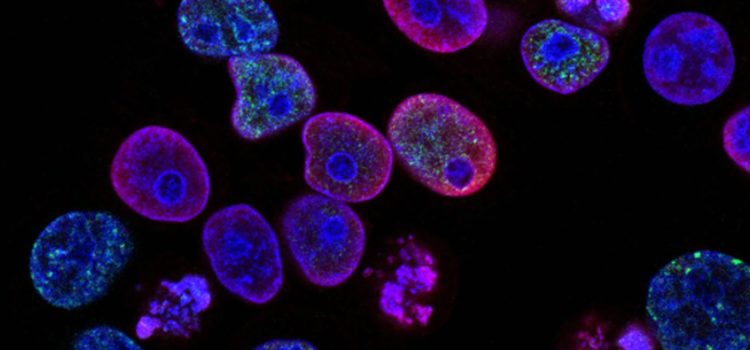

This article is an excerpt from the Shortform summary of "The Immortal Life of Henrietta Lacks" by Rebecca Skloot. Shortform has the world's best summaries of books you should be reading.
Like this article? Sign up for a free trial here .
What can you learn from The Immortal Life of Henrietta Lacks summary? Was Henrietta Lacks just an unfortunate patient? How did her cells impact science forever? What happened to her family?
The Immortal Life of Henrietta Lacks is a book that tells the story of HeLa cells and where they came from. It also sheds light on the inequalities and ethical issues in medicine and research. This Henrietta Lacks book summary highlights the important takeaways.
Learn what happened with this The Immortal Life of Henrietta Lacks summary.
A massive bestseller when it was published in 2010 and the basis for an HBO miniseries of the same name, The Immortal Life of Henrietta Lacks tells the story of Henrietta Lacks, a young African-American woman killed by a particularly vicious form of cancer, and her incredible cancer cells, which opened up entirely new directions in scientific research due to their “immortality”—their capacity to grow rapidly and unstoppably outside of her body.
The Immortal Life of Henrietta Lacks summary tells the story of Henrietta, her family, and her incredible cells. Tracking both the scientific advances owed to “HeLa” cells and the struggles of Henrietta’s descendants, author Rebecca Skloot leads readers through the history of cell research, the ethical implications of scientific study, and the human story of a poor and ailing family whose matriarch contributed to some of 20th-century science’s greatest achievements.
The author of the book, science reporter Rebecca Skloot, spent 10 years researching Henrietta Lacks, her family, and the scientific advances her indefatigable cells made possible. In the course of her reporting, Skloot became close with Deborah Lacks, Henrietta Lacks’s daughter, and much of The Immortal Life of Henrietta Lacks summary is devoted to Deborah’s struggles with her mother’s absence and scientific legacy. This Henrietta Lacks book summary discusses the interactions between Deborah and Skloot.
The Immortal Life of Henrietta Lacks Summary: Overview
In this Henrietta Lacks book summary, you’ll learn how scientists discovered the formula for growing cells in a laboratory, why Henrietta’s doctors were able to use her tissues without her knowledge or permission, and what happened to Henrietta’s family after she passed—and while her cells lived on.
The Immortal Life of Henrietta Lacks Summary: Cells in Culture and Lacks’s Death
HeLa cells were unlike anything scientists had seen previously. They were truly “immortal”—properly cultured, HeLa cells would grow indefinitely. Of course, the cells’ resiliency, which made them so valuable to researchers, was less welcome in terms of Henrietta’s health. According to Henrietta’s doctors, the radium and X-ray treatments had rid her of cancer; yet she maintained the cancer was spreading: She said she could feel it. She returned to the hospital twice, first with abdominal discomfort, then with an ache along her sides, but the doctors sent her home each time, writing in her record that there was no evidence that her cancer had come back.
This Henrietta Lacks book summary discusses many of the issues with the treatment of African-Americans in medicine and research. (Latter-day research has shown that African-American patients were treated differently from white ones at the time Lacks was under medical care: They were admitted to hospitals at later stages of illness than their white counterparts, and when they were finally hospitalized, they received less pain medication and had higher mortality rates. Henrietta’s doctor says Henrietta received the same care as white patients of the time, but it’s impossible to know for sure.)
The Immortal Life of Henrietta Lacks Summary: Funeral and Remains
Upon learning that Henrietta had passed, George Gey asked Henrietta’s doctors to perform an autopsy in the hope of extracting more “immortal” cells. But, whereas doctors could take cell samples from a living patient without permission, autopsies and extracting tissue from the dead did require permission. At first Day denied the doctors that permission, but he eventually relented.
The pathologist removed many of Henrietta’s organs, including her bladder, uterus, appendix, and heart; many of these organs were covered in tumors. The official cause of death was terminal uremia (blood poisoning): Tumors had entirely blocked Henrietta’s urethra, preventing her from passing urine and doctors from inserting a catheter.
Henrietta was buried in Clover. It rained for days leading up to her funeral, and on the day she was buried, as soon as her coffin was lowered into her grave behind the home-house, the sky turned black and a massive gust of wind tore the metal roof of a barn and sent it flying above Henrietta’s grave. The wind was so strong, according to the Lacks cousins that attended the funeral, that it tore one cousin’s cabin out of the ground, killing the cousin inside.
The Immortal Life of Henrietta Lacks Summary: Contributions to Science
- The development of a method for freezing cells without damaging them, which allowed researchers to “pause” the processes they were studying and then restart them without any effect on the cell;
- The standardization of the field of tissue culture, which enabled researchers around the world to grow cells in their laboratories consistently and efficiently;
- The discovery of a method for cloning cells (HeLa cells grew from a sample of Henrietta’s tissue, and so were cultivated from a cluster of cells rather than one specific cell; cloning allowed scientists to study the behavior of a specific cell in a variety of situations); and
- The direct observation and accurate counting of chromosomes in a human cell (prior to 1953, scientists believed human cells had 48 chromosomes rather than 46; the confirmation of the correct count allowed scientists to determine the etiology of diseases like Down syndrome and Turner syndrome).

———End of Preview———
Like what you just read? Read the rest of the world's best summary of Rebecca Skloot's "The Immortal Life of Henrietta Lacks" at Shortform .
Here's what you'll find in our full The Immortal Life of Henrietta Lacks summary :
- How Henrietta's cells became used in thousands of labs worldwide
- The complications of Henrietta's lack of consent
- How the Lacks family is coping with the impact of Henrietta's legacy






